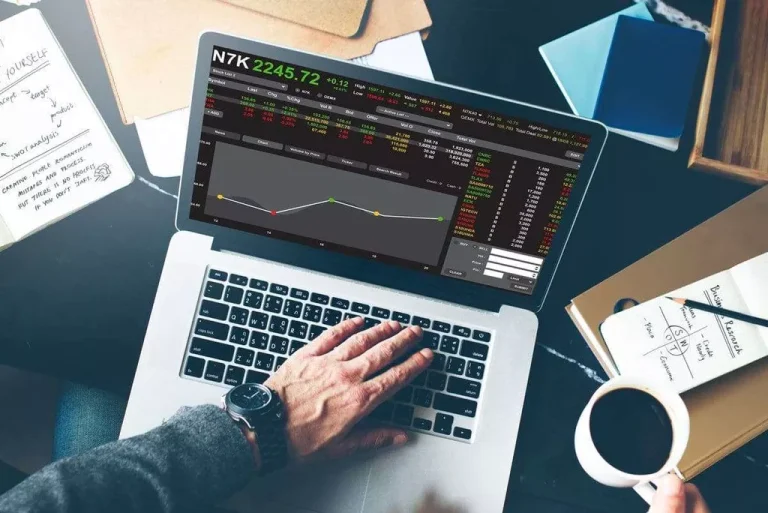Outstanding centralized exchanges often https://www.xcritical.com/ encounter much less slippage than decentralized exchanges. Binance, for instance, mechanically sets slippage tolerance to 0.5% and in addition permits traders to adjust it manually. To put that in an instance, let’s say you initiated a commerce to sell cryptocurrency at the worth of $100.
Cash and tokens don’t transfer between wallets each time you trade on the exchange, however only once you request a withdrawal. That means there’s no concern for blockchain congestion or transaction instances, which suggests low slippage. Utilizing the instance given above, a $10 slippage divided by a $100 asset worth would lead to a 10% slippage proportion.
- For instance, a 1% slippage tolerance means the trade will only execute if the final value is inside 1% of the quoted price.
- If the precise executed value goes past that vary, the trade won’t go through.
- In cryptocurrency, slippage is attributable to 4 market circumstances.
- I Am excited about DeFi, L1s, L2s, rollups, and cryptoeconomics and how these improvements form the blockchain trade as a rising global product.
- Even a brief delay between order placement and execution can lead to slippage.
If the ultimate execution value moves beyond that vary, the commerce won’t go through. That means, you keep away from getting crammed at a level you never agreed to. Slippage becomes a problem when market fluctuations are excessive or liquidity is low. That’s why your trading strategy should all the time embody a slippage check—especially on decentralized platforms. If you’re buying and selling a token with low liquidity, it’s harder to match your order exactly. The system fills your trade utilizing the closest available prices, which will not be perfect.
Using restrict orders helps avoid paying greater than meant, particularly throughout risky durations when prices can change rapidly. For instance, a optimistic slippage occurs when you buy an asset for the precise price of $100, however the executed commerce price is $95. The value difference marks a constructive slippage, which means that you simply obtained a better worth than expected. Conversely, positive slippage happens when a trade executes at a more advantageous worth than initially intended. An instance can be inserting a purchase order for a cryptocurrency at $100, just for the order to fill at $99. While optimistic slippage can lead to elevated features, negative slippage can erode potential profits or amplify losses for merchants.
In our instance, the cake market is rather like the cryptocurrency market. If there’s not sufficient liquidity on the platform when buying cryptocurrency, slippage might turn into a problem. It’s a simple technical issue of needing the assets right then and there to execute the requested perform. In this liquidity-centric mannequin, the value of an asset is decided by an algorithm based on the available liquidity within the pool.
This means at the point it’s processed the price may be considerably different—another slippage cause to watch out for. Understanding slippage meaning and the method it impacts your trading is essential for any crypto investor. Beneath you can find tips on how to change the slippage tolerance for Uniswap and Pancakeswap. Lowering slippage is not only about saving earnings; it’s about refining your trading technique for long-term success. Market conditions affect slippage, especially in periods of excessive volatility, corresponding to major information events or economic reports.
Subsequently, it is necessary to consider slippage when inserting crypto market orders, as it may possibly open new doorways to threat management methods. Nevertheless, allow us to offer you a practical example to higher perceive the idea of slippage in crypto trading efficiency. Let’s say you buy or promote a crypto asset for $200, however in the lengthy run, the executed value is $205, and then a crypto slippage occurs. Slippage is a typical occurrence within the dynamic cryptocurrency market, referring to a deviation between a trade’s anticipated worth and its actual execution value.
Cointelegraph: Kairon Labs Sheds Light On What Real Market Makers Do
As traders change tokens, the asset pair’s relative liquidity shifts, causing every asset’s value to changes in actual time. For example, if a consumer buys a significant quantity of 1 token from the pool, its price will improve relative to the opposite token, following the method’s algorithm. This dynamic ensures that the larger the trade, the extra the value will deviate from its current value. Understanding slippage is important to using liquidity swimming pools effectively.

Exchange-traded Product (etp) Vs Exchange-traded Fund…

For example, if a dealer expects to buy a token at $100 however the price drops to $95 throughout execution, the commerce benefits from a lower purchase worth. Constructive slippage leads to receiving more tokens for the same quantity or spending less of the trading asset than expected. Slippage occurs primarily because the price curve in an AMM is repeatedly adjusted as each commerce is processed. If other transactions are executed simply before or simultaneously with yours, they will shift the worth curve, affecting your trade. This is very pronounced during times of excessive market exercise or in liquidity pools with restricted property.
Liquidity refers to how easily an asset may be bought or bought. Trading pairs with excessive liquidity—where there are plenty of consumers and sellers—generally have decrease slippage. Trading much less liquid pairs can lead to higher market influence and higher slippage, that means the value you get could probably be less favorable. Therefore, it’s important for merchants to minimize or get rid of slippage. Please read further as in the next chapters, we talk about a few of the most important methods for lowering slippage and navigating risky markets. Centralized and decentralized exchanges handle slippage in a different way Cryptocurrency, impacting your backside line.
Putting limit orders stands as a extremely effective technique to keep away from slippage. To clarify, a limit order allows you to specify a particular shopping for or selling worth you’re proud of. This kind of buy or promote order will solely execute when at that specific value. This guarantees the result you desire, sidestepping any nasty slippage surprises.
Furthermore, the dimensions of a trade can immediately influence the extent of slippage. Bigger orders usually tend to exceed the available liquidity at a particular worth point, particularly for less well-liked cryptocurrencies. This forces the order to be filled at progressively worse prices because it consumes available liquidity, thereby increasing the slippage. Network congestion on blockchain platforms can also delay transaction processing times, allowing prices to move further before slippage tolerance an order is confirmed and executed. While positive slippage can profit merchants, negative slippage is extra common and presents a risk in unstable or low-liquidity markets. Each types are pure outcomes of the method in which AMMs and liquidity pools function.
